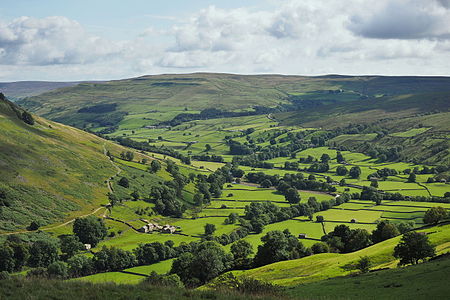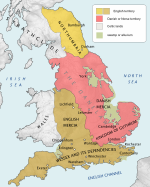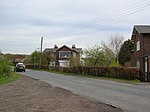Yorkshire

Yorkshire ( YORK-shər, -sheer) is an area of Northern England and an historic county. It includes the ceremonial counties of East Riding of Yorkshire, North Yorkshire, South Yorkshire, and West Yorkshire, which are all part of the Yorkshire and the Humber region, and parts of Greater Manchester, Lancashire, Cumbria, and County Durham. Despite no longer being used for administration, Yorkshire retains a strong identity.The historic county was bordered by County Durham to the north, the North Sea to the east, Lincolnshire, Nottinghamshire, Derbyshire, and Cheshire to the south, and Lancashire and Westmorland to the west; it was the largest by area in the United Kingdom. The county was subdivided into three ridings – North, East, and West – which from the Middle Ages began to be used for local government functions. Between 1889 and 1974 the ridings were administrative counties. Yorkshire Day is observed annually on 1 August and is a celebration of the general culture of Yorkshire, including its history and dialect. Its name is widely recognised by British institutions, for example in the Royal Yorkshire Regiment of the British Army, in sport, and in the media. The emblem of Yorkshire is a white rose, which was originally the heraldic badge of the British royal House of York. The county is sometimes referred to as "God's own country".
Excerpt from the Wikipedia article Yorkshire (License: CC BY-SA 3.0, Authors, Images).Yorkshire
Embsay Pasture Road,
Geographical coordinates (GPS) Address Nearby Places Show on map
Geographical coordinates (GPS)
| Latitude | Longitude |
|---|---|
| N 54 ° | E -1 ° |
Address
Embsay Pasture Road
BD23 6PR , Embsay with Eastby
England, United Kingdom
Open on Google Maps









